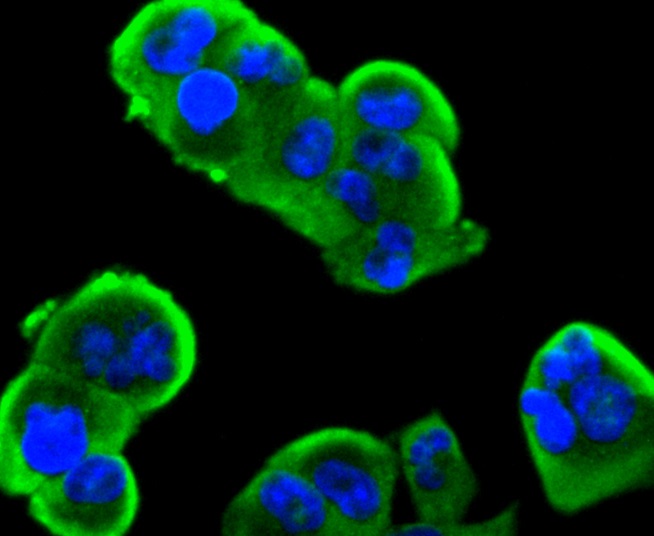The insulin receptor (IR) is a heterodimeric protein complex that has an intracellular β subunit and an extracellular α subunit, which is disulfide- linked to a transmembrane segment. The insulin ligand binds to the IR and initiates molecular signaling pathways that promote glucose uptake in cells and glycogen synthesis. Insulin binding to IR induces phosphorylation of intracellular tyrosine kinase domains and recruitment of multiple SH2 and SH3 domain-containing intracellular proteins that serve as signaling intermediates for pleiotropic effects of insulin. The human insulin receptor gene maps to chromosome 19p13.3-p13.2 and encodes a 1382 amino acid protein that cleaves to form α and β subunits. Type 1 diabetes is an auto-immune condition of the endocrine pancreas that results in destruction of insulin secreting cells and a progressive loss in insulin-sensitive glucose uptake by cells. Type 2 diabetes is a condition where cells become resistant to insulin action.





